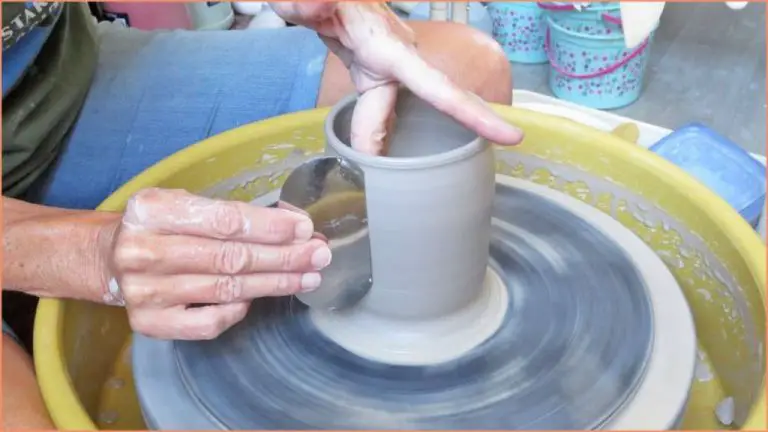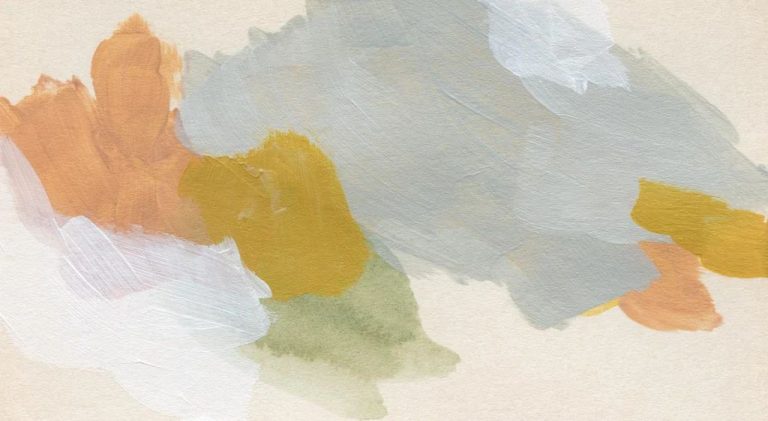What Techniques Were Used To Make Terracotta Warriors?
The Terracotta Army refers to the thousands of life-size clay soldier figures that were buried near the mausoleum of Qin Shi Huang, the first emperor of China. The figures date back over 2,200 years to around 210 BCE when the Qin dynasty ruled over China.
The warriors were created on the emperor’s command to be placed in underground pits near his tomb. Their purpose was likely to help protect the emperor in the afterlife. Each soldier figure was given a unique facial expression and details to seem lifelike. The project required intense labor and skills to produce around 8,000 soldiers along with hundreds of horses, chariots, and weapons.
The Terracotta Army provides a fascinating window into the military power, artistic sophistication, and funerary customs during the Qin dynasty. The figures remained remarkably well-preserved underground for millennia before their rediscovery in the 1970s near Xi’an, China. They are now regarded as one of the greatest archaeological finds of the 20th century.
Clay Materials
The terracotta warriors and horses were made from local clay sourced from the ground near Emperor Qin’s mausoleum in Lintong County, China. The clay used was an earthenware type clay with high amounts of sticky rice flour or other organic additives mixed in. This made the clay very sticky and plastic, which helped it hold its form during sculpting. However, it also made the clay prone to cracking during drying and firing. The clay contains small pieces of mica which give the terracotta figures their characteristic shimmering, flickering quality in sunlight.
The properties of this local clay made it well-suited for sculpting the details of the warriors’ clothing, armor, and facial features. Its high plasticity allowed artisans to work it into intricate shapes. The organic additives prevented the clay from becoming too brittle as it dried, reducing cracking. The clay’s composition gave the terracotta figures strength while maintaining a relatively low weight.
Sculpting Process
The sculpting process for the terracotta warriors was an assembly line production involving many artisans. Each artisan was tasked with sculpting a specific part of the figure. The figures were crafted in components – the head, arms, legs, and torso were all sculpted separately. This allowed the artisans to focus on their specialty and work efficiently.
The sculptors used a variety of simple tools to carve the details into the clay. Knives, drills, chisels, saws and wooden mallets helped shape the figures and add intricate designs to the armor and clothing. Armatures and models were used as guides to maintain consistency amongst the thousands of warriors.
Clay was built up on the armatures to form the bodies. Details like facial features, hair, clothing patterns and armor were carved into the clay. The assembly line approach with artisan specialization allowed remarkably consistent results to be achieved across the entire army.
Once the individual body parts were completed, they were left to dry before being assembled. The sections were joined together using slurry and clay to form the complete figures. Elaborate details like armor, caps, and shoes were sculpted separately then attached to the final sculpture.
The efficient yet artistic sculpting process allowed an army of individually crafted warriors to be created on a massive scale.
Kiln Firing
The terracotta warriors were fired in a special type of kiln known as a “dragon kiln.” This was an oval-shaped tunnel kiln with chambers that allowed for precise control over temperatures and firing times. The warriors were likely fired at temperatures between 900-1000°C for over a week. This high-firing temperature resulted in the terracotta becoming very hard and durable. It changed the clay composition, removing water and organic matter and creating ceramic materials like mullite. The long firing times allowed the large sculptures to be heated through entirely and avoided cracking or warping. The specialized dragon kilns were able to be continuously fired, allowing for mass production of the terracotta army.
Assembly
The assembly of the terracotta warriors was a complex process given the enormous scale of the army. Each warrior statue was made up of multiple parts that had to be fired separately in the kilns and then assembled. This was necessary because it would have been impossible to successfully fire life-sized statues whole in the technology available at the time.
The bodies of the warriors were hollow, with openings to insert arms, legs, and heads. The limbs were made separately and then attached at joints using an early riveting technique. Small holes were drilled into the shoulders, hips, knees, elbows, and other connection points. Then ceramic rods were inserted to attach the arms, legs, and head. The rods formed a strong bond that held the parts together.
In some cases, the arms were sculpted integrally with the torso for stability. But the legs and head were always made separately to be assembled later. Craftsmen took care to sculpt and attach the parts precisely to ensure the proportions were accurate and the joins were seamless. This assembly technique allowed the figures to be highly detailed and lifelike.
Painting
The terracotta warriors were originally painted in vivid pigments made from minerals and natural materials. The paint helped bring the sculptures to life with realistic colors and details. The pigments used included cinnabar for red, azurite for blue, malachite for green, and ochre for brown and yellow. The colors symbolized rank, with senior officers painted in bright reds and lower ranked soldiers in greens and browns.
The painting process involved first applying a primer layer of lacquer, followed by a layer of pigment. Multiple layers were applied to create depth and dimension. Fine brushes were used to painstaking details like facial features, clothing patterns, and accessories. The painting provided a life-like appearance up close, while giving visual uniformity and cohesion when viewing the army as a whole.
Unfortunately, the vivid colors have faded over time after being exposed to air and moisture. Traces of pigment remain protected under earth and clay accretions, giving clues to how the warriors originally looked. Careful restoration work is being done to analyze and reproduce the original polychrome painting techniques used over 2,000 years ago.
Weaponry
The terracotta warriors were created with a variety of real weaponry to match their rank and role in battle. The materials used for the weapons varied.
For swords, dagger-axes, spears, lances and halberds, most were coated with a layer of chrome to mimic steel. Copper and tin alloys were also used. The weapons were attached to the warriors’ hands with an adhesive paste or with twine threaded through holes in the palms. Arrowheads were made of bronze and attached to wooden shafts.
Some higher ranking terracotta generals and officers had additional weapons attached to their chariots, including bronze swords, crossbow triggers, shields, and knives. The chariot horses were also equipped with ornamental bronze saddles and bridles.
The attention to realistic weaponry shows the level of craftmanship and effort that went into equipping the terracotta army for battle and ceremony.
Hair and Details
The sculptors of the Terracotta Army paid close attention to the hairstyles and facial details of the warriors. They wanted each figurine to have a sense of individuality and realism.
For the warriors’ hairstyles, the sculptors created a variety of looks including top-knots, straight hair, curly hair, and different lengths from short to long. Some warriors have thick beards as well. They used clay coils to make the different strands and textures of hair.
The sculptors were very meticulous about the facial details. Subtle differences in the eyes, nose, mouth shape, wrinkles, and facial hair were added to give each warrior a distinct appearance. Some look stern, some look more peaceful, and some appear to be mid-speech.
Molds were likely used to create identical repeated elements like certain hairstyles, beards, and expressions. But the molds still allowed many unique details to be sculpted by hand onto each figure.
Adding individually crafted hairstyles, beards, and facial expressions breathed life into the mass-produced army and served to honor the memory of each solider depicted.
Pit Arrangement
The Terracotta Army pits contain thousands of warriors arranged in battle formation, along with horses, chariots, and weapons. The pits were specially constructed to house and protect the warriors.
Wooden beams, mats, and planks were placed over the pits to form roofs that could support the weight of the soil above. The Warriors were placed on these wooden supports in precise military formation – vanguard, main force, rear guard. Infantrymen were placed in front rows, with archers behind them, followed by cavalry and chariots at the back.
The pits were then filled with soil, but not before beams were lit on fire to form burnt walls that would protect the pit contents from thieves and damage. Additionally, liquid mercury was poured on the soil floor of some pits to symbolize China’s legendary Rivers and Seas, as well asreplicate the Emperor’s nearby tomb.
This meticulous pit arrangement allowed the Terracotta Army to be exceptionally well-preserved for over 2,000 years before their discovery and excavation in the 1970s.
Legacy
The terracotta warriors have a profound legacy and archaeological significance. Though largely forgotten for centuries after their creation, the rediscovery of the warriors in the 1970s was one of the most important archaeological finds of the 20th century. Their discovery gave researchers unprecedented insight into the military power and artistic sophistication of the Qin Dynasty.
The thousands of detailed, individualized statues provide a snapshot of the multiethnic army assembled under China’s first emperor. Each face is unique, reflecting the diverse backgrounds of the soldiers. This has allowed scientists to gain information on racial demographics, ethnic origins, and migration patterns in ancient China.
In addition to their historical value, the terracotta warriors have had a lasting cultural influence. They have become a symbol of China’s rich history and artistry, representing ancient craftsmanship and military might. Replicas and depictions of the warriors are now ubiquitous. Their discovery sparked international interest in archaeology and Chinese history. And they continue to be a major tourist destination, attracting over a million visitors annually to Xi’an.
Though created for battle and conquest, the legacy of the terracotta army today is one of insight into China’s past, artistic achievement, and cultural pride.



